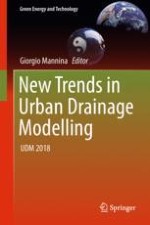2019 | OriginalPaper | Chapter
Where Does Infiltrated Stormwater Go? Interactions with Vegetation and Sub-surface Anthropogenic Features
Authors : Jeremie Bonneau, Tim D. Fletcher, Justin F. Costelloe, Peter J. Poelsma, Robert B. James, Matthew J. Burns
Published in: New Trends in Urban Drainage Modelling
Publisher: Springer International Publishing
Activate our intelligent search to find suitable subject content or patents.
Select sections of text to find matching patents with Artificial Intelligence. powered by
Select sections of text to find additional relevant content using AI-assisted search. powered by
